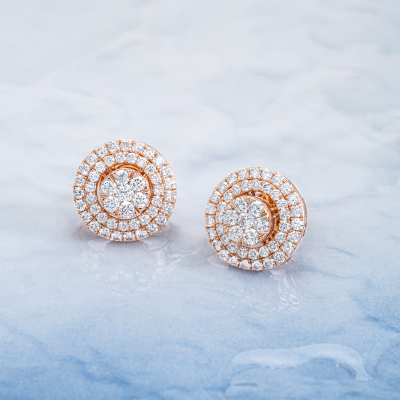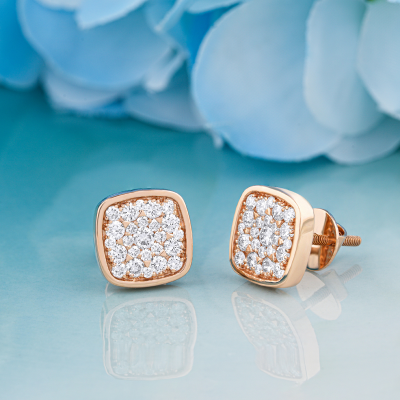Who Introduced the 4C of Lab Grown Diamonds?
Robert M. Shipley, introduced the 4C of lab grown diamonds in the year 1953. This was done to create a uniform standard of grading technique for gemologists and jewelers across the world. Although grading systems exist today in the world, the GIA method is the most popular.
GIA started grading lab grown diamond jewelry in 2007. However, in the beginning, the grading reports were quite different from those made for natural gemstones. Since 2020, GIA has started grading these types of gemstones similarly and offered full grading reports for both.
Right now, there are so many major labs that have the authority to grade these diamonds made in laboratories. It includes the GIA, the International Gemological Institute (IGI), the American Gem Society (AGS), the Gem Certification and Assurance Lab (GCAL), and HRD Antwerp.
Grading The 4C Of Lab Grown Diamonds
Let us understand the grading report of the gemstones made in laboratories.
Color
When it comes to transparent diamonds, the grading of the color of these gemstones – natural or man-made – is graded in a range of D to Z. the higher the grade of the stone; the more colorless the diamond is.
The color grading scale is divided into Colorless, Near Colorless, Faint, Very Light, and Light.
- The stones that have a grade of D, E, and F come under the category of colorless. D grade is highly colorless, whereas E and F are comparatively less transparent than a D grade.
- The stones with a grade of G to J come under the near colorless category. These gemstones appear colorless except when placed under close observation.
- The stones with a grade of K, L, and M come under the category of faint or "Lightly tinted".
- Diamonds with a very light (N to R) and light (S to Z) grade exhibit strong hues of yellow or brown tints.
When it comes to fancy colored diamonds – natural or man made – they are graded based on hue, tone, and saturation.
- Hue represents the dominating color in the stone.
- Tone shows the relative darkness or lightness of the diamond.
- Saturation defines the intensity of the diamond’s hue.
Cut
Lab Grown Diamonds in India are cut just like natural diamonds. They use the same process and tools to give a uniform shape to the stone. However, diamonds grown in labs are more uniform in shape and contain less imperfection.
Grading round cuts
The standard round cut is a widely popular cut for a transparent lab made diamond. This cut perfectly shows the brilliance and fire of the stone. The GIA standard to grade round cuts are similar for natural, and man made diamonds. They are graded under the category of Excellent, Very Good, Good, Fair, or Poor.
Grading other fancy cuts
Any non-round cuts come under fancy-cut diamonds such as cushion, princess, or emerald. Fancy cut evaluations rely more on subjective judgment than precise measurement of a stone's appearance and performance.
Clarity
Since we all know lab diamonds India are made under a controlled environment, they are much more likely to receive higher clarity grades than naturally mined diamonds. However, they might still have certain inclusions which can affect their grade.
Both natural and man made diamonds have the same clarity grade.
1.Diamonds that do not have any inclusions, even under 10x magnification, receive the highest clarity grade, i.e., Flawless (F).
2.The next grade, Internally Flawless (IF), does not possess any visible inclusions but might have certain surface blemishes.
3.The Very, Very Slightly Included (VVS) possess some inclusions that can hardly be seen under 10 x magnifications.
4.After VVS comes the Very Slightly Included (VS), whose inclusions are somewhat visible under 10 x magnifications due to their relief, size, or placement.
5.Next comes the Slightly Included (SI), whose inclusions are somewhat visible even without a microscope.
6.The final clarity grade is Included (I), whose inclusions are too obvious under magnification and visible to the naked eye.
7.Grades such as VVS, VS, and SI are further categorized into VVS1, VVS2, VS1, VS2, SI1, and SI2. The I category has the following subdivisions: I1, I2, and I3.
Carat
Lab grown diamonds can be made in large carat weights compared to their natural counterparts. Man made diamonds between the carat weights of 1 and 3 are quite popular among jewelry lovers because they are much more affordable and cost-effective.
CVD Diamonds can become as large as 6 to 9 carats, whereas HPHT diamonds can reach up to 10 carats, with the largest ever growing up to 15 carats.
The bottom line is you will find practically no difference between natural and lab grown stones. They appear similar; they are made of the same components, and they are graded in a similar way. However, lab grown diamonds will put less strain on your wallet!










